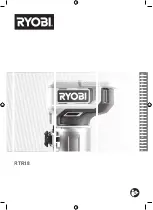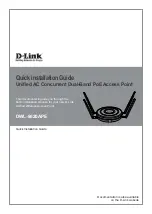
HotPoint 1500R Outdoor Wireless Mesh Router
v
SURVEYING THE SITE
Look over the entire site before beginning any installation and anticipate possible hazards. Never
assume anything without checking it out for yourself! Don't take shortcuts!
Caution! Risk of electric shock!
TO AVOID FALLING, USE SAFE PROCEDURES WHEN WORKING AT HEIGHTS ABOVE
GROUND.
•
Select equipment locations that will allow safe and simple installation.
•
Don’t work alone. A friend or co-worker can save your life if an accident happens.
•
Don't attempt repair work when you are tired. Not only will you be more careless, but your
primary diagnostic tool - deductive reasoning - will not be operating at full capacity.
•
•
Use approved non-conducting ladders, shoes and other safety equipment. Make sure all
equipment is in good repair.
•
If a tower or mast begins falling, don’t attempt to catch it. Stand back and let it fall.
•
If anything such as a wire or mast does come in contact with a power line, DON’T TOUCH IT
OR ATTEMPT TO MOVE IT. Instead, save your life by calling the power company.
•
Don’t attempt to erect antennas or towers on windy days.
•
MAKE SURE ALL TOWERS AND MASTS ARE SECURELY GROUNDED, AND
ELECTRICAL CABLES CONNECTED TO ANTENNAS HAVE LIGHTNING ARRESTORS.
This will help prevent fire damage or human injury in case of lightning, static build-up, or short
circuit within equipment connected to the antenna. The HotPoint 1500R has an external
ground connector and built in lightning protection. Be sure that any other equipment
connected to the HotPoint 1500R also has the same level of protection.
•
The base of the antenna mast or tower must be connected directly to the building protective
ground or to one or more approved grounding rods, using 10AWG ground wire and corrosion-
resistant connectors.
•
Refer to the National Electrical Code for grounding details.
IF A PERSON COMES IN CONTACT WITH ELECTRICAL POWER, AND CANNOT MOVE.
•
DON’T TOUCH THAT PERSON, OR YOU MAY BE ELECTROCUTED.
•
Use a non-conductive dry board, stick or rope to push or drag them so they no longer are in
contact with electrical power.
•
Once they are no longer contacting electrical power, administer CPR if you are certified, and
request emergency medical aid immediately.
DO NOT OPEN THE COVER
•
Dangerous voltages inside.
•
No serviceable parts inside.
•
Refer to qualified service personnel.
•
Unit must be disconnected from power prior to servicing






































